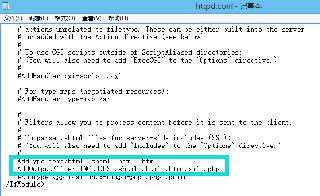Android實(shí)現(xiàn)接近傳感器
本文實(shí)例為大家分享了Android實(shí)現(xiàn)接近傳感器的具體代碼,供大家參考,具體內(nèi)容如下
1.接近傳感器檢測(cè)物體與聽筒(手機(jī))的距離,單位是厘米。
一些接近傳感器只能返回遠(yuǎn)和近兩個(gè)狀態(tài),如我的手機(jī)魅族E2只能識(shí)別到兩個(gè)距離:0CM(近距離)和5CM(遠(yuǎn)距離) 因此,接近傳感器將最大距離返回遠(yuǎn)狀態(tài),小于最大距離返回近狀態(tài)。 接近傳感器可用于接聽電話時(shí)自動(dòng)關(guān)閉LCD屏幕以節(jié)省電量。
一些芯片集成了接近傳感器和光線傳感器兩者功能(魅族E2)。
2.代碼如下:
MainActivity.class
package com.example.sz.proximitytest;import android.hardware.Sensor;import android.hardware.SensorEvent;import android.hardware.SensorEventListener;import android.hardware.SensorManager;import android.support.v7.app.AppCompatActivity;import android.os.Bundle;import android.util.Log;import android.view.Menu;import android.view.View;import android.widget.Button;import android.widget.TextView;public class MainActivity extends AppCompatActivity { private static final String TAG = 'MainActivity'; private SensorManager mSensorManager=null; private Sensor mSensor=null; private TextView textView1=null; private TextView textView2=null; private TextView textView3=null; private Button button1=null; private Button button2=null; @Override protected void onCreate(Bundle savedInstanceState) { super.onCreate(savedInstanceState); setContentView(R.layout.activity_main); textView1 = (TextView) findViewById(R.id.textView1); textView2 = (TextView) findViewById(R.id.textView2); textView3 = (TextView) findViewById(R.id.textView3); /*獲取系統(tǒng)服務(wù)(SENSOR_SERVICE)返回一個(gè)SensorManager對(duì)象*/ mSensorManager = (SensorManager) getSystemService(SENSOR_SERVICE); /*通過SensorManager獲取相應(yīng)的(接近傳感器)Sensor類型對(duì)象*/ mSensor = mSensorManager.getDefaultSensor(Sensor.TYPE_PROXIMITY); /*注冊(cè)相應(yīng)的SensorService*/ button1 = (Button) findViewById(R.id.button1); button1.setOnClickListener(new Button.OnClickListener() { @Override public void onClick(View arg0) { mSensorManager.registerListener(mSensorEventListener, mSensor , SensorManager.SENSOR_DELAY_NORMAL); } }); /* 銷毀相應(yīng)的SensorService * 很關(guān)鍵的部分,注意,說明文檔中提到,即使Activity不可見的時(shí)候,感應(yīng)器依然會(huì)繼續(xù)工作 * 所以一定要關(guān)閉觸發(fā)器,否則將消耗用戶大量電量*/ button2 = (Button) findViewById(R.id.button2); button2.setOnClickListener(new Button.OnClickListener() { @Override public void onClick(View v) { mSensorManager.unregisterListener(mSensorEventListener, mSensor); } }); } /*聲明一個(gè)SensorEventListener對(duì)象用于偵聽Sensor事件,并重載onSensorChanged方法*/ private final SensorEventListener mSensorEventListener = new SensorEventListener() { @Override public void onSensorChanged(SensorEvent event) { Log.e(TAG, 'onSensorChanged: -----0------'+event.values[0]); Log.e(TAG, 'onSensorChanged: ------1-----'+event.values[1]); Log.e(TAG, 'onSensorChanged: --------2---'+event.values[2]); if (event.sensor.getType() == Sensor.TYPE_PROXIMITY) { /*接近傳感器檢測(cè)物體與聽筒的距離,單位是厘米。*/ //這里要注意,正常都是取第一位的值,但我碰到一個(gè)取第二位的 float distance1 = event.values[0]; float distance2 = event.values[1]; float distance3 = event.values[2]; textView1.setText('[0]距離:'+String.valueOf(distance1) + 'cm'); textView2.setText('[1]距離:'+String.valueOf(distance2) + 'cm'); textView3.setText('[2]距離:'+String.valueOf(distance3) + 'cm'); } } @Override public void onAccuracyChanged(Sensor sensor, int accuracy) { } };}
activity_main.xml
<?xml version='1.0' encoding='utf-8'?><LinearLayout xmlns:android='http://schemas.android.com/apk/res/android' xmlns:app='http://schemas.android.com/apk/res-auto' xmlns:tools='http://schemas.android.com/tools' android:layout_width='match_parent' android:layout_height='match_parent' android:gravity='center' android:orientation='vertical' tools:context='.MainActivity'> <TextView android: android:layout_width='wrap_content' android:layout_height='wrap_content' android:text='Hello World!' /> <Button android: android:layout_width='wrap_content' android:layout_height='wrap_content' android:layout_marginTop='20dp' android:text='打開' /> <Button android: android:layout_width='wrap_content' android:layout_height='wrap_content' android:layout_marginTop='20dp' android:text='關(guān)閉' /></LinearLayout>
源碼下載:Android接近傳感器
以上就是本文的全部?jī)?nèi)容,希望對(duì)大家的學(xué)習(xí)有所幫助,也希望大家多多支持好吧啦網(wǎng)。
相關(guān)文章:
1. jsp實(shí)現(xiàn)登錄驗(yàn)證的過濾器2. Xml簡(jiǎn)介_動(dòng)力節(jié)點(diǎn)Java學(xué)院整理3. phpstudy apache開啟ssi使用詳解4. ASP.NET MVC使用異步Action的方法5. 利用ajax+php實(shí)現(xiàn)商品價(jià)格計(jì)算6. 爬取今日頭條Ajax請(qǐng)求7. jsp文件下載功能實(shí)現(xiàn)代碼8. ajax實(shí)現(xiàn)頁面的局部加載9. uni-app結(jié)合.NET 7實(shí)現(xiàn)微信小程序訂閱消息推送10. AJAX的跨域問題解決方案

 網(wǎng)公網(wǎng)安備
網(wǎng)公網(wǎng)安備